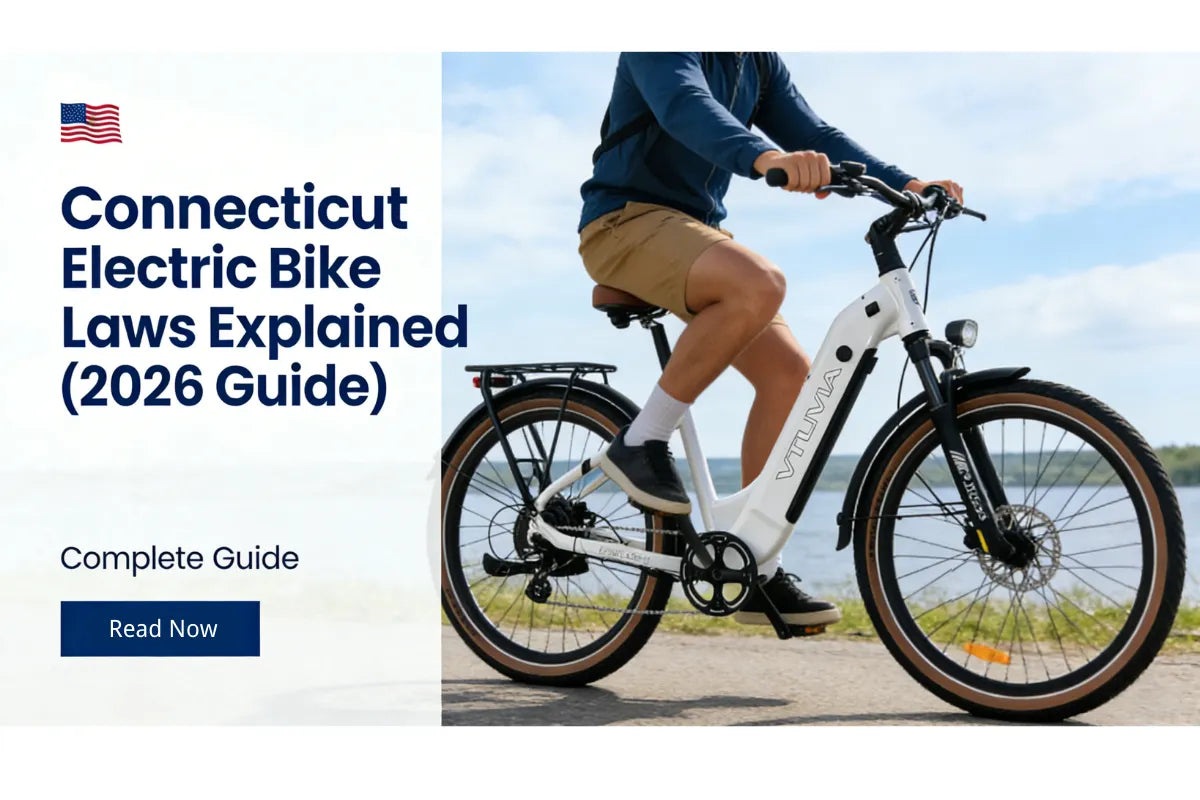How to Test an Electric Bike Hub Motor – A Simple Step-by-Step Guide
Whether you’re retired and enjoy peaceful rides around your neighborhood, or love taking your electric bike out for weekend adventures, keeping your motor in good shape is key to a smooth ride. Don’t worry—testing your hub motor isn’t as complicated as it sounds. You don’t need to be a mechanic or own fancy tools. This guide walks you through each step slowly and clearly, so you can do it right at home.
1. Why Test Your Hub Motor?
Your electric bike’s hub motor is like its heart—it keeps everything moving. Over time, you might notice signs that it needs attention:
- The bike feels weaker when you start pedaling or going uphill.
- You hear unusual noises like grinding or clicking.
- The motor doesn’t start even when the battery seems fine.
- The ride feels bumpy or uneven when power kicks in.
These are all good reasons to check your motor and make sure everything’s running smoothly.
2. Safety First
- Find a quiet, well-lit spot—like your garage or driveway.
- Turn off your bike and remove the key (if it has one).
- Make sure the bike is standing steadily, preferably on a kickstand or bike stand.
- Keep a small cloth nearby—things might get a little dusty!
3. Step-by-Step: How to Test the Hub Motor
Step 1: Check the Battery First
Sometimes what feels like a motor problem is actually just a weak or loose battery connection. Here’s how to be sure:
- Turn on your display panel: Does it light up normally? If not, your battery might be low or disconnected.
- Use a voltmeter: If you have one, check the voltage. Compare it to the rated number printed on your battery (for example, 48V). If it’s much lower, charge it fully before testing again.
- Check the battery connection: Gently wiggle the plug where the battery connects to the bike. A loose plug can interrupt power. You should feel a solid click when it’s properly seated.
- Try another battery (if available): If your bike works with another battery, then you’ve found your culprit.
Tip: A healthy battery gives steady power. If your motor still doesn’t respond after checking the battery, continue to the next step.
Step 2: Listen and Feel the Motor
Turn on your bike and slowly twist the throttle or pedal (if it’s pedal assist). Pay attention to what you feel and hear:
- Normal: The motor should start smoothly and quietly, with a gentle hum.
- Not normal: Grinding, rattling, or silence usually means something’s off—like loose wires or a worn motor bearing.
Step 3: Check the Motor Connections
Most hub motors connect to the controller through a bundle of colored wires. Gently inspect these connections:
- Make sure all plugs are tight and none of the wires look frayed.
- Look for corrosion or dirt inside the plugs. A quick clean with a dry cloth often helps.
- Be gentle—don’t pull or twist the cables too hard.
Step 4: Test the Throttle and Pedal Assist
- Throttle test: Lift your back wheel off the ground. Twist the throttle lightly. If the motor spins, it’s working fine.
- Pedal assist test: If you have PAS (pedal assist), gently pedal while turning the display on. You should feel the motor kick in smoothly.
If nothing happens, check the sensor near your pedals—it might just be dirty or misaligned.
Step 5: Take a Short Ride Test
Once you’ve checked all the connections, take your bike for a short spin in a safe, open space:
- Listen for smooth acceleration.
- Pay attention to any hesitation, strange noises, or loss of power.
- If everything feels smooth and steady, your motor is likely fine!
4. What If the Motor Still Doesn’t Work?
If you’ve followed all the steps and your hub motor still isn’t responding, here’s what might be happening:
- The controller could be faulty or not sending enough power.
- Internal gears or bearings in the motor might need professional attention.
- There could be hidden wire damage inside the cable casing.
Don’t worry—you’ve already done the most important part: identifying that something’s wrong. Leave the rest to professionals.
5. When to Call for Help
If your motor still isn’t working or you’re unsure about any of the steps, you don’t need to handle it alone. Our friendly customer service team is always ready to help. We can walk you through additional checks or arrange professional service if needed.
Contact our official support team:
- VTUVIA Official Customer Service
- Email: support@vtuviaebike.com
- Or simply send us a message on our website—we’ll get back to you quickly!
6. Final Thoughts
Testing your electric bike hub motor doesn’t have to be stressful. With a bit of patience and careful observation, you can solve many small issues right at home. Remember, electric bikes are built to bring you comfort, freedom, and joy—not worry. Take it slow, enjoy the process, and if things get tricky, our team is always here to lend a hand.
Keep your wheels spinning and your adventures rolling!





Share:
How to Choose the Right E-Bike for Adults 45+ — Safe, Comfortable & Fun Rides
48V eBike Battery Charging Time Explained — Real Examples & Tips